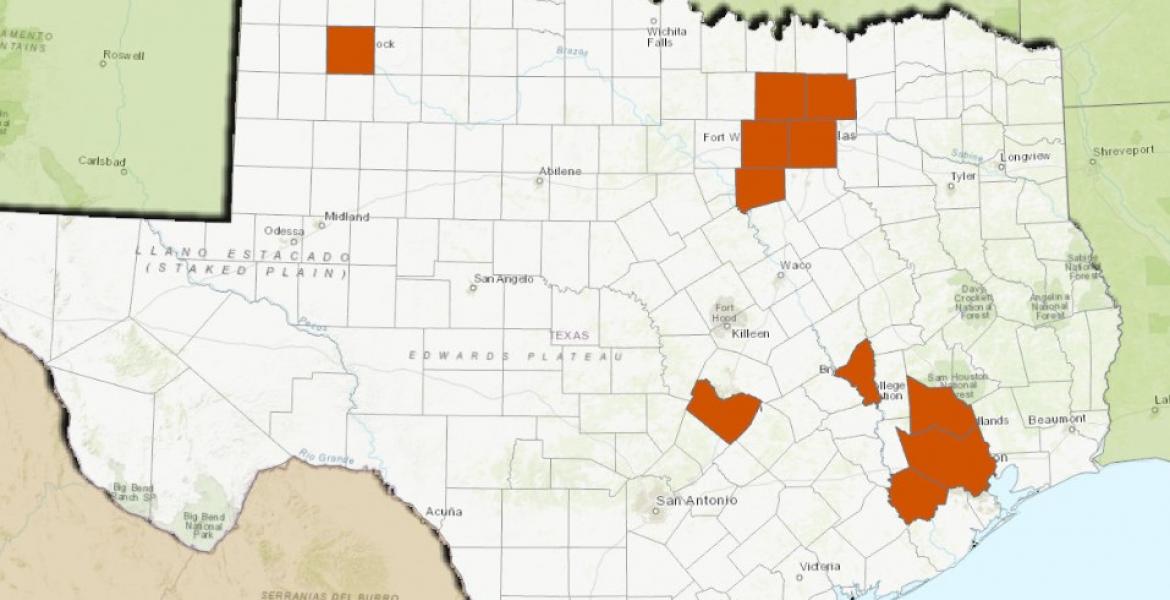SAN ANGELO, TX - In September, Texas released its first-ever strategic plan on child abuse prevention and early intervention (PEI) aimed to protect children, and to help strengthen families.
This is a five-year strategic plan intended “to be more than a guide for PEI’s work,” said Sasha Rasco, Associate Commissioner for Prevention and Early Intervention with the Department of Family and Protective Services. “We will use it as a calling card to engage more community organization partnerships to achieve an array of positive outcomes for children and families.”
Previously, in a statement to the media, Chairman of the Senate Health and Human Services Committee Senator Charles Schwertner said he is encouraged by the plan’s “goals to better utilize data to target prevention resources in areas of the state with the greatest needs, increase collaboration and sharing of resources with other entities, and annually report every program’s effectiveness, thereby ensuring Texas children and families receive high quality, evidence-based services and supports.”
Rasco added that those who contributed to the plan are working together to prevent child maltreatment and other negative outcomes by strengthening families and fostering healthy child development.
The Goals of the Five-Year Strategic Plan
According to the DFPS Prevention and Early Intervention Five-Year Strategic Plan, the total estimated lifetime impact associated with child maltreatment was $454 billion in Texas in 2014.
Thus, the goal of the plan is to help alleviate that cost. However, first and foremost, the plan’s authors emphasized the purpose is to reduce the risk of child maltreatment, fatalities and other childhood adversities.
“In addition, by providing access to health, wellness and family-strengthening programs, PEI will achieve an even wider array of positive outcomes that benefit not only those served, but local communities of Texas as a whole,” noted the authors.
Overall, the goals are as follows, according to the plan:
- PEI will adopt a public-health framework to prevent child maltreatment and fatalities, and support positive outcomes for all involved.
- PEI will maximize the impact of current investments and seek additional resources to serve more children, youth and families, and strengthen communities.
- PEI will make and share decisions about investments in families and communities based on an analysis of community risk and protective factors as well as community-developed needs assessments.
- PEI will utilize research findings to improve program implementation, and to direct program funding toward the most effect programs, which will help achieve better results for children and families.
- PEI will measure and report on the effectiveness of its programs on an annual basis, and will make timely corrections based on available data.
- PEI will maximize its impact by collaborating with other state entities and external organizations working with similar populations.
- PEI will be transparent and inclusive in its planning and operations, and will proactively publish its strategic plan and progress towards its goals.
There are currently six PEI programs underway: Services to At-Risk Youth (STAR); Community Youth Development (CYD); Statewide Youth Services Network (SYSN); Texas Families Together and Safe (TFTS); Community Based Family Services (CBFS); and Healthy Outcomes through Prevention and Early Support (HOPES).
Initiative Comes Just in Time
With the issues facing state agencies, including Child Protective Services, many people who have joined the fight against child abuse feel this initiative comes just in time.
In fact, this week, the Austin American-Statesman reported that Texas leaders admonished CPS to get its act together.
Governor Greg Abbott, Lt. Gov. Dan Patrick and House Speaker Joe Straus told Commissioner Hank Whitman, whose agency runs CPS, “It is completely unacceptable that the state isn’t making timely visits to children believed to be in immediate danger of abuse or neglect.”
The AAS also reported that, in mid-September, more than 14,000 children across the state, one-third of those with open CPS cases, had not been seen by child-abuse investigators between 24 and 72 hours after a report of abuse. This timeframe is state-mandated, and nearly 2,000 of those cases were considered urgent, which means the children could have been in immediate danger.
Because of these issues, another news agency reported that Texas child welfare investigators were ordered to work overtime last weekend “to ensure that kids at risk of abuse are being seen and evaluated.”
The Local Response to the Initiative
Previously, LIVE! reported on how children in San Angelo will reap the benefit of the recent CPS Shakeup and the important assistance provided by newly elected San Angelo Police Chief Frank Carter (see story here).
Executive Director Heather Ward further explained how the new Five-Year Strategic Plan will also benefit the Concho Valley in wake of recent issues facing Texas children.
“I believe this strategic plan will enable San Angelo, the Concho Valley and Texas to bring back a culture of compassion that truly places a renewed emphasis on the well-being of children, families and communities,” said Ward. “I believe, as a society, we must all take responsibility for the well-being of children and families, and recognize solutions begin and end with each of us.”
Ward said many times people think it’s not up to them, but we all have a role to play in changing the direction of Texas’ future.
“If we wait until children are removed, or CPS is involved, we have waited too late,” Ward continued. “Multiple studies over 20 years show us the toll abuse, neglect, trauma, and other adverse events in childhood can take on a child’s brain development and the long-term effects that can last a lifetime.”
Ward added that “even if children are left in their biological homes because there aren't enough foster homes and nurturing, support, and safety are not provided, but do not rise to the level of CPS attention, research shows an increase in the likelihood of PTSD, addiction, inability to regulate emotion or feel empathy, and the increased likelihood of disease and decreased life expectancy.”
She said the CAC believes Commissioner Whitman, Governor Abbott and Texas legislatures are moving in the right direction for systems overhaul and making significant progress, but it will take all sectors working together to address the larger public health issues.
"Regardless of how efficient a system is, systems cannot replace the positive impacts of strong, healthy family and community," said Ward. "System overhaul is only a portion of the solution for strengthening and supporting families."
Overall, Ward said people can blame others for what’s happening, but blaming doesn’t solve the problem.
“Child and family well-being is a complex issue and it takes a complex solution,” Ward stated. “Children and families struggle for many reasons, and they excel because of many more. However, if we do not invest in children and families and commit to improving systems, the future of Texas, based on what research tells us, is pretty bleak—whether you are looking through an economic, health, or capacity lens--unless we all step up and ask ourselves, 'Is my sector doing what it can to help with this issue?'”
Ward noted that this plan has the capacity to engage the community and state in many ways. She said much like the solution implemented on smoking cessation (public health model and social ecological model), child and family well-being can be addressed in the same way.
She added, “If we study the research, we know that a strong foundation in childhood makes a huge difference for a lifetime.”
In regards to San Angelo, Ward maintained she is hopeful because Representative Drew Darby, Child Protection Courts, CAC Board Members, foundations, and multiple agencies, schools, business leaders, and coalitions are committed to families and children in the community.
“It is a matter of connecting the pieces, filling gaps by engaging the community, evaluating services, and holding each other accountable to focus not only on our own missions, but on the greater good of our children, families, community and state,” said Ward.
Local Businesses Taking a Role
In regards to partnerships, local businesses have been instrumental to this state initiative.
Ward explained that many businesses and local leaders have come forward to help keep children from “slipping through the cracks.”
“Child protection and child welfare is extremely complex due to civil and criminal law, as well as the various services that families need to keep their child in the home or to support foster families in providing a strong home for children who may have serious needs,” Ward explained. “When the State changes [its] portion of the investigations, the City has to change [as well], or there is a gap. Many of us in the community tried to absorb the gap as there was a lack of resources with the police department and lack of recruits to be able to quickly increase child crimes detectives when we talked with the council members and the prior Chief.”
To fill in the gaps, Ward said the CAC had to pull from its endowment fund and spent significant unbudgeted dollars to increase security and technology at the CAC so Hope House could receive statewide intakes and better support the MDT at the local level to help coordinate and keep kids safe.
The CAC board also helped to recruit business leaders who could help “move” the organization “to the next level” and “assist with fundraising and structure.”
Ward said many of these business leaders took projects she was working on, or events she had previously been involved with, and “they ran with them” so she could support staff; staff could focus on direct services; and they could work with agency partners to understand how they could make things work better.
Ward noted, “Board members jumped in. For example, James Skinner, an attorney, ran with implementing a new IT system so we could receive intakes. Bette White added layers on to Champagne & Diamonds to help us bring in more funds. Mike Hennings with Tres Amigos started a golf tournament for us, utilizing his staff to plan, implement and run it. Mike, also having construction and building experience, has ran with our building project and helped us move forward on it. Shannon Rushing has also helped with the building and locating space, as well as introduced new ideas to our board, or challenged the way we have always done things.”
Both Hennings and Rushing said they got involved in the CAC for the distinct privilege of working with people dedicated to doing what’s needed for the community.
“Mostly what I’ve gained is watching these awesome folks doing what they do,” said Hennings. “Our staff feels very motivated to participate. They see that we are participating in something much bigger than our company world.”
How Hope House Changes Play Role in Initiative and Challenges Ahead
Ward said CAC is unique in that it’s an umbrella organization. The CAC Board and Hope House MDT jumped at the opportunity to help change the way the San Angelo community responds to child abuse.
By receiving intakes from Statewide Intake in Austin, which began last year, the staff can use the information to identify trends, including substance abuse, domestic violence, lack of resources, etc.
Ward said, “In the first 6 months of reviewing the statistics, it was apparent that we needed more child crimes detectives. It also helped us identify gaps in communication among agencies, as well as the need for different screening methods and new protocols. We took the statistics to the community meeting in April so everyone could fully understand the trends we were seeing and engage the group in solutions.”
By the agencies coming together, things have changed, Ward said. As explained previously, Chief Carter also agreed to house three detectives in the new Hope House building.
“This is huge as many CACs co-locate across the state,” said Ward. “This type of space sharing will allow Hope House staff and detectives to be on the same page and increase communication while decreasing redundancy in admin tasks. It is our hope the detectives can be in the field more while we streamline paperwork, forensic interviews, and coordination of services.”
Also, by housing the main programs of CAC, including CASA, Family Enrichment Services and Hope House under one roof, cost effectiveness increases and staff engage in ongoing learning and real-time training.
However, there are some challenges still ahead for CAC, which Ward explained has to do with a lack of manpower to coordinate the group, and a lack of availability for some other leaders because there is so much change occurring at one time in all of the agencies, and the need for many direct services across all sectors has increased rapidly.
Ward stated, “As a state, we have grown so quickly and our population locally has changed over the last five years. For many of us in social services, or working with the public sector, we’ve just been trying to make sure families and children are served, and we remain informed on system changes.”
Ward added that, in her opinion, the biggest obstacle for the CAC has been staff doing all of their regular work, and also adding on meetings, minutes, follow through, and research to address the larger issues.
“When people are just trying to keep their head above water with regular operations due to growth and demand, it can be difficult to add more work to your plate and know you have to be consistent with communication to several groups,” said Ward. “I think it is necessary for non-profits to invest in leaders who are willing to come to the table and come up with solutions; but, to do that, they have to have a strong staff to help carry out operations without burning out direct service staff.”
Ward said she is currently working with CVFA, policymakers, CAC Board members and community agencies to develop a structure and mechanism to help with flow of information.
“I think it will take a group of us getting together and hammering out details,” added Ward. “I think the main idea here is the systems are reforming and change is happening, but this is larger than the CAC, law enforcement, CPS, or foster care. We all play a part in it, but so does everyone else, and help is needed to really affect change.”
For community members who wish to get involved in this initiative, contact (325)653-4673.
Subscribe to the LIVE! Daily
Required






Post a comment to this article here: